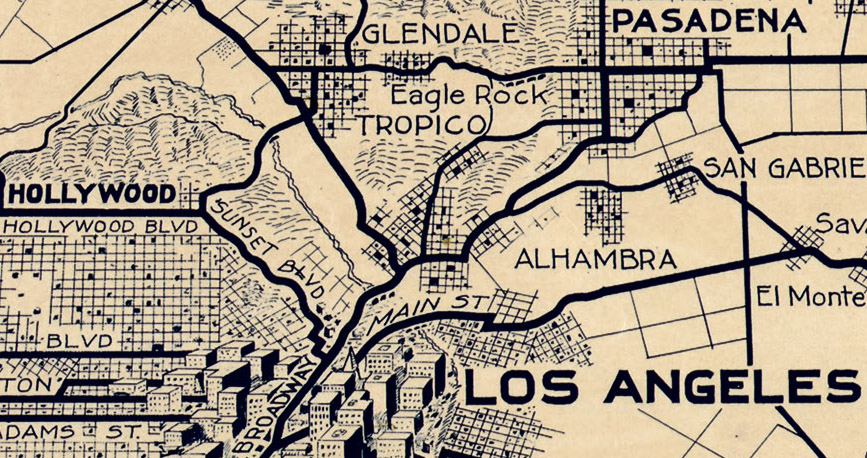Architect and urban designer Doug Suisman was at the Architecture and Design Museum last night to give a brief presentation and sign reissue copies of Los Angeles Boulevard, an in-depth examination of the planning and development of L.A.’s major streets.
Suisman noted that Los Angeles Boulevard was first published as a limited run of 1,500 copies in 1989, the same year as Mike Davis’ seminal polemic on power and politics of L.A. public planning, City of Quartz. Unlike City of Quartz, Suisman’s book celebrates the boulevards of Los Angeles as vital thoroughfares worthy of spatial, historical, and cultural analysis.
“Los Angeles is not, as some say, organized by its freeways,” noted moderator Greg Goldin, “because there are no destinations on its freeways. You have to get off and go to the boulevards to get where you want to go.” This fact, central to Suisman’s work, prompted the architect to conceptualize L.A. the same way urban theorists conceptualize Paris, London, or New York.
“The survival of cities has very much depended on movement and stasis, boulevard and architecture,” said Suisman. “My practice has always been about path and place,” he added, citing the famous spatial theories of Kevin Lynch. In his presentation, Suisman examined the interface between buildings and street, presenting an “A to Z” chronology of architectural development from Leon Battista Alberti (1404-1472) to Peter Zumthor (b. 1943), and how each architect’s work affected street life.
The “Z” was not without irony–across the street, LACMA prepares for its new ambitious building by Zumthor, who has proposed to bridge Wilshire Boulevard. Suisman cited as architectural precedent none other than Le Guichet du Louvre, the wing of the Louvre elevated over the Pont du Carrousel. Will Zumthor’s LACMA be the same, positively effecting traffic and pedestrian life like the Louvre or Alberti’s Palazzo Ruccelai? Or will it create a gloomy overpass out of an audacious new museum?
After the presentation, one could not help but dwell on the similarities and differences between Paris and L.A.–how privileged and public spaces operate in each city, and how they were created, carefully or haphazardly, by architects and urban planners. Suisman left the audience with one final message: to insist the Z’s remember the A’s, and to learn from the past as we build for the future.







